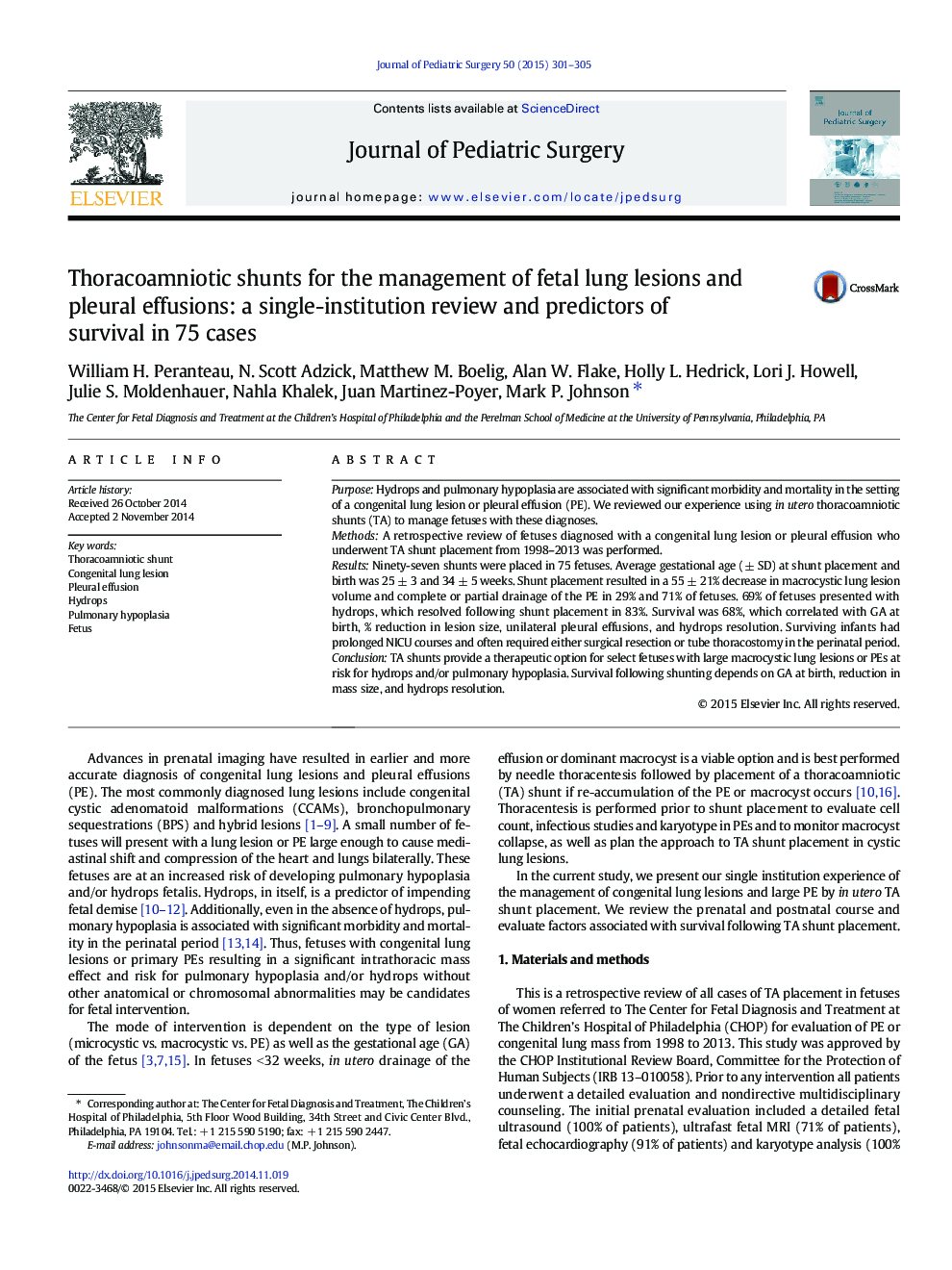| Article ID | Journal | Published Year | Pages | File Type |
|---|---|---|---|---|
| 4155641 | Journal of Pediatric Surgery | 2015 | 5 Pages |
PurposeHydrops and pulmonary hypoplasia are associated with significant morbidity and mortality in the setting of a congenital lung lesion or pleural effusion (PE). We reviewed our experience using in utero thoracoamniotic shunts (TA) to manage fetuses with these diagnoses.MethodsA retrospective review of fetuses diagnosed with a congenital lung lesion or pleural effusion who underwent TA shunt placement from 1998–2013 was performed.ResultsNinety-seven shunts were placed in 75 fetuses. Average gestational age (± SD) at shunt placement and birth was 25 ± 3 and 34 ± 5 weeks. Shunt placement resulted in a 55 ± 21% decrease in macrocystic lung lesion volume and complete or partial drainage of the PE in 29% and 71% of fetuses. 69% of fetuses presented with hydrops, which resolved following shunt placement in 83%. Survival was 68%, which correlated with GA at birth, % reduction in lesion size, unilateral pleural effusions, and hydrops resolution. Surviving infants had prolonged NICU courses and often required either surgical resection or tube thoracostomy in the perinatal period.ConclusionTA shunts provide a therapeutic option for select fetuses with large macrocystic lung lesions or PEs at risk for hydrops and/or pulmonary hypoplasia. Survival following shunting depends on GA at birth, reduction in mass size, and hydrops resolution.
